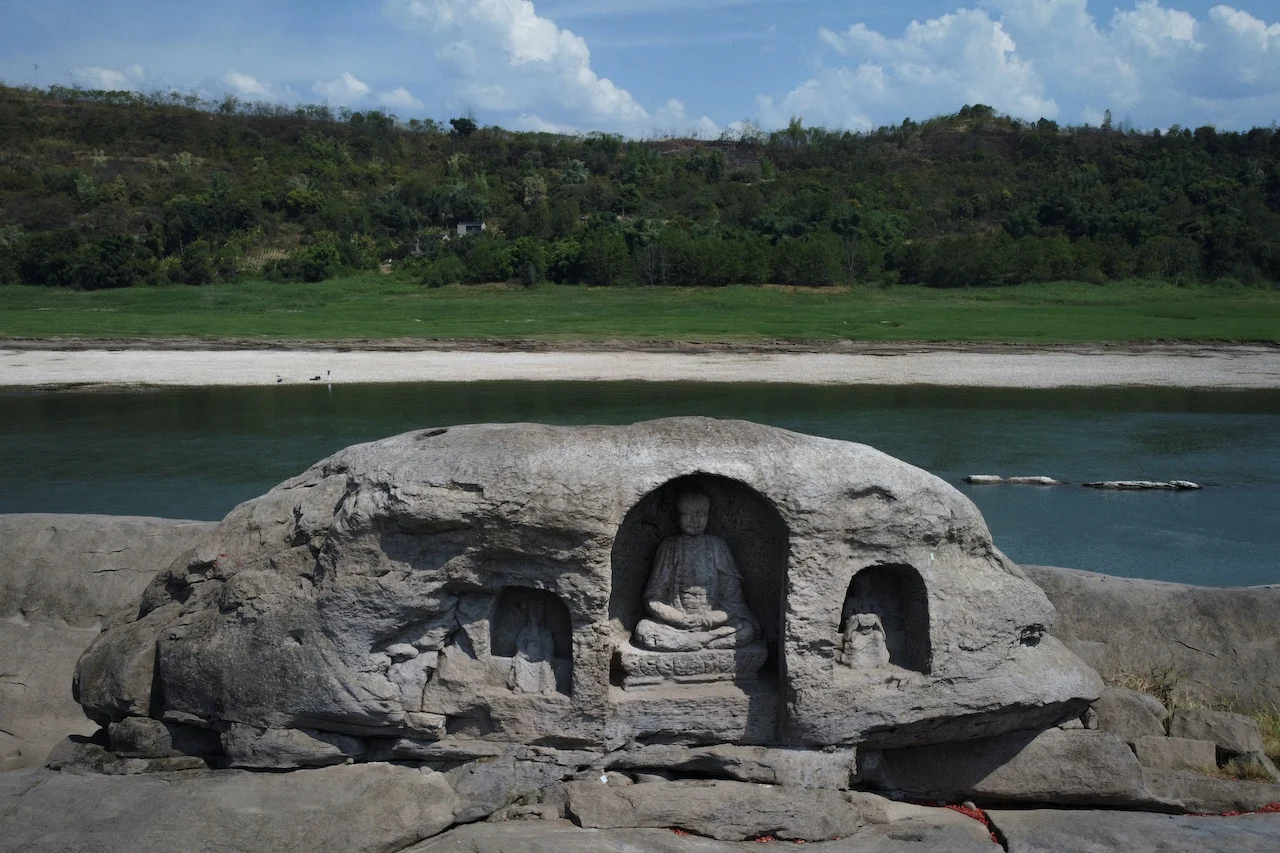
Receding water levels of China's Yangtze reveal ancient Buddhist statues
BEIJING (Reuters) - Plunging water levels of the Yangtze River have revealed a submerged island in China’s southwestern city of Chongqing and a trio of Buddhist statues on it that are believed to be 600 years old, state media Xinhua has reported.
The three statues were found on the highest part of the island reef called Foyeliang, initially identified as built during the Ming and Qing dynasties. One of the statues depicts a monk sitting on a lotus pedestal.
MUST READ: 5 products to help keep spiders under control
The Yangtze’s water levels have been falling rapidly due to a drought and a heatwave in China’s southwestern region.
Rainfall in the Yangtze basin has been around 45% lower than normal since July, and high temperatures are likely to persist for at least another week, official forecasts said.

A once submerged Buddhist statue sits on top of Foyeliang island reef in the Yangtze river, which appeared after water levels fell due to a regional drought in Chongqing, China, August 20, 2022. REUTERS/Thomas Peter
As many as 66 rivers across 34 counties in Chongqing have dried up, state broadcaster CCTV said on Friday.
Weeks of baking drought across Europe have also revealed long-submerged treasures.

An aerial view shows the Yangtze river that is approaching record-low water levels during a regional drought in Chongqing, China, August 20, 2022. REUTERS/Thomas Peter
In Spain, archaeologists have been delighted by the emergence of a prehistoric stone circle dubbed the "Spanish Stonehenge". Another of Europe's mighty rivers, the Danube, has fallen to one of its lowest levels in almost a century, exposing the hulks of more than 20 German warships sunk during World War Two near Serbia's river port town of Prahovo.
(Reporting By Norihiko Shirouzu and Ella Cao in Beijing; Editing by Christina Fincher)









